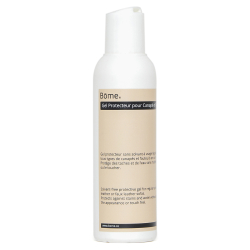Repairing and protecting your leather sofa
Introduction
A central element of your living room, the leather sofa combines aesthetics and comfort. Over time, signs of wear and tear can appear, such as scratches or dry patches. Your leather armchairs can also suffer the same damage over time.
To keep your leather soft and supple, we recommend that you maintain it several times a year. Without regular care, even pigmented leather will harden, crack and, in the worst cases, crack.
Our guide will show you how to repair your leather sofa to double its lifespan. Repairing your leather sofa also helps to preserve its original beauty. If the leather has hardened, you'll need to repair it using a repair kit.
The recommended products are compatible with all types of leather on your sofa: pigmented leather, aniline, etc.
They are made in France with natural active ingredients to achieve incomparable results. All the products are included in a repair kit to simplify repairs.
All our necessary products mentioned in the article are available on our site. They have been put together in a renovation kit to simplify your renovation.

Before repairing the leather sofa
To repair your leather sofa, it needs to be dusted and cleaned beforehand. To do this, you need the right products with a leather cleaner.
Bōme sofa cleaners allow you to thoroughly clean the leather without damaging it. The natural active ingredients in the formulas unclog the pores of the leather to leave a clean leather.
Bare leather is more receptive to repair products. So don't neglect this stage in the repair process. This stage ensures longer-lasting results.
To match the colour
Harmonising the colour of your sofa and armchairs will rejuvenate their appearance. To carry out this type of repair, you need to use renovation milks. These pigmented milks have a dual action: they nourish the leather and pigment it. They can be used to renovate the colour of your leather sofa.
They can be applied to all sofa leather finishes: pigment or aniline. Leather renovation should be carried out regularly to achieve the best, long-lasting results.
Highly pigmented, they allow a layer of pigment to be applied to the leather. They colour the lightened areas and harmonise the colour of the sofa.
The layers of product are absorbed by the leather and the surplus remains on the surface. To remove the excess and avoid transfers, apply a coat of nourishing gel after renovation. There's no need for drying time with the application of renovation milks. The nourishing gel will fix the pigments in the leather and remove the excess.
So there's no risk of transfer to your clothes or skin.

To reduce superficial marks
Over time, leather sofas may show signs of wear and tear. These marks are superficial and can be reduced by nourishing the leather.
To do this, we recommend that you nourish the leather with Bōme nourishing gel. The cedar oil contained in the nourishing gel provides deep nourishment. Leather that is regularly nourished marks less easily.
You can also apply Bōme Renovating Milk to remove the white appearance of certain marks. It nourishes and dyes the leather, restoring its original appearance.

Repairing a tear
Depending on the depth of the tear, there are different solutions: filling with a repair paste or with a patch.
For superficial tears, you can apply repair paste to your torn leather sofa. Simply apply a light, very smooth layer to blend in with the leather. Leave to dry for a few hours for the paste to harden before applying colour and protection.
If the sofa is badly torn, we advise you to apply a patch under the surface. The patch will fill the crack to restore a smooth surface. You can then use covering products such as renovation milks to colour the patch. This will harmonise the colour of your sofa.
If the tear is large or deep, we advise you to seek professional help. A professional may be able to reupholster your sofa cushion.
Our tips for making repairs last:
To prolong the repair of your leather sofa, here are a few things you can do:
1. Always fix the resulting work with a protective spray or fixative. In some cases, the fixative can take the form of a specialist varnish. In all cases, they provide protection against external aggression and ensure the repair lasts.
2. Regular maintenance to keep the leather moisturised and supple. Ideally, we recommend once a month. Supple leather is leather that marks less, chips less and tears less.













